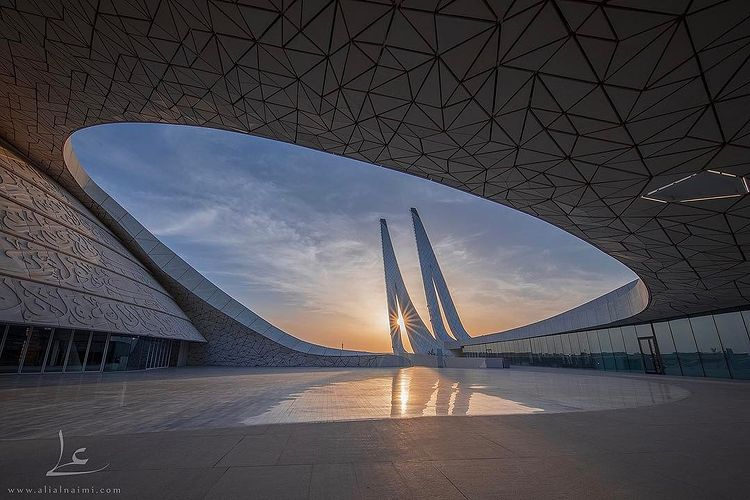Red Dot Films has been known for its exceptional skill in cinematography, and in Qatar, it has been the perfect choice for filming architectural footage.
Architecture photography is considered a speciality and a genre by itself. The Qatari photographer Ali Al-Nuaimi briefly explains, “any capture consists of elements that involve human intervention falls under the architecture genre such as buildings and bridges. If it does not consist of human intervention, it falls under the landscape, such as waterfalls and fields.” In the same context, the videography is categorised.


In all cases, whether the person is a videographer or photographer, they must take into account the composition and framing of what is captured so that it appears appropriately, distributing the elements in it in an acceptable manner to allow the eyes to accept it, giving all considerations to the lights and shadows, so that they do not appear in a distorted way. These rules and guidelines have been found over the years, even before the invention of the camera.
For a while, Red Dot was the only Qatari company with the capability, technology, and cinematographic tools. Media entities and ministries contracted with it to film mosques in Qatar, such as the Mohammed Abdel Wahab Mosque, which was filmed for the Ministry of Awqaf before its opening when its name was the State Mosque, as well as Al Rayyan TV who asked Red Dot to film Al-Qubeib Mosque, Al-Shuyoukh Mosque and Souq Waqif Mosque. The TV channel was showing the footage at night after the scheduled broadcasting ends, accompanied by Quran.
However, by going back to this footage, it turns out that the Red Dot team was interested in showing distinct cinematic shots of the mosques with considering what distinguish them and make them different from other buildings.
Yousif Al Hamadi, the Creative Head of Red dot, said, “the filming was focusing on what distinguishes mosques, taking into account that the shots are certainly of a high cinematic level”. The mosque has certain elements that characterise it throughout history, such as the dome, its size, decorations and columns, the minaret, its shape and location, the mihrab and its decorations, the courtyard and its porticos (riwaqs), the mosque’s entrances, and the manner of construction, whether it depends on riwaqs or iwans, or consists of one or multi domes.
According to Professor Josef W. Meri, the specialist in the history of interfaith relations in the Middle East, mosques initially followed the trabeated system, riwaq system, as a building has a roof and supported by several rows and pillars. Eventually, the Persians developed the iwan mosque as a vaulted space that opens on one side to a courtyard. The iwan continued to be used in monumental architecture in the Islamic era. Later, the Ottomans in the fourteenth century resulted the central dome mosque as a new feature to the design and construction. Today, concrete dominates how all buildings are constructed, whether in the Islamic world or elsewhere.
Nevertheless, no one can deny that the shots taken by Red Dot’s cameras were cinematically distinct, taking into account all the elements of composition and framing. Watching them puts the viewer in a great mood like listening to a musical piece of a master.